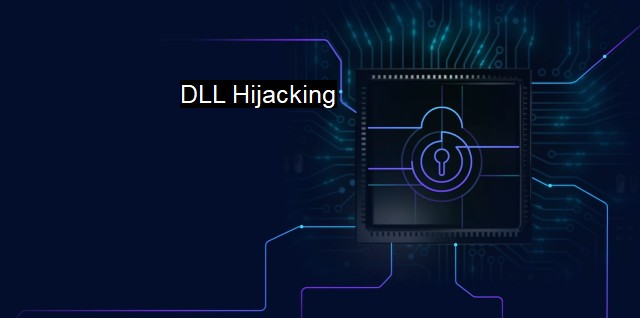What is DLL Hijacking?
Exploiting Windows Dynamic Link Library Loading Procedure: Understanding the Malicious Threat of DLL Hijacking and Its Implications in Cybersecurity
Dynamic-link-library or DLL Hijacking is a notable vulnerability that threatens computer systems worldwide and compromises their security. It is commonly known with with a specific focus on safeguarding against harmful attacks that hijack DLL files.DLL files are essentially libraries that contain code and data, both of which can be used by more than one program concurrently. Windows operating system uses DLL files as shared libraries which most applications grab onto while needed for their corresponding operations. It facilitates efficient memory usage and modularity for a software application's executable file.
DLL Hijacking targets these DLL files. The fundamental principle of how this attack works is rather plain—when an application runs, it often calls a DLL file to perform a specific task. As part of its usual operation, an application may request potentially vulnerable DLL without specifying a precise path to these files. If the specific location is not mentioned, Windows will search for the DLL in various directories on a predetermined path.
Unfortunately, this process wreaks havoc when a malicious DLL is intentionally planted in one of the directories and overrides the original DLL file. Upon running the application, Windows will inadvertently load and execute the malicious DLL, thereby compelling the system to perform actions dictated by the rogue code. This strategy of leveraging the mechanism of DLL loading to execute harmful files is essentially what is known as DLL Hijacking.
It should be noted that DLL Hijacking is more opportunistic than overtly aggressive—after all, it relies heavily on vulnerable programs that do not provide a fully qualified path to the DLLs they use. In effect, DLL Hijacking can be either local or remote, depending on the folders the DLL search algorithm searches. Local attacks involve the attacker gaining access to the victim's computer physically or user-level access remotely, while remote attacks can take place over network shares or WebDAV shares.
There are several forms of DLL hijacking, and some are more complex and involve greater sophistication than others. One common type is Binary planting—that involves placing a malicious DLL file with the same name as a legitimate DLL expected by a program. Or the attack can take the form of a "Relative Path DLL Hijacking", where a malicious DLL file is placed in the same directory as the file being executed by a user. In either type, the main objective of DLL Hijacking is the same: facilitate privilege escalation, harmful code execution, and similar detrimental effects.
In the context of antivirus software and other cybersecurity measures, safeguarding a system against DLL Hijacking goes beyond standard scans for suspicious files. Robust protection requires proactive measures such as regular patching of applications, maintaining up-to-date operating systems, and deploying firewalls that prevent unauthorized network access both inbound and outbound. adopting Secure Development Lifecycle (SDL) practices can prevent such vulnerabilities from appearing during the development phase itself, well before execution.
Detecting DLL Hijacking requires close monitoring of the integrity of DLLs and applications used by the system. This involves analyzing and checking them rigorously against threats. Several solutions can enable this, such as file-integrity monitoring, security information, and event management (SIEM).
DLL Hijacking emerges as an exploit that cleverly uses the system's operational mechanism to its advantage. with mindful adherence to robust cybersecurity guidelines, regular updates, active threat monitoring, and the adoption of secure development practices, its potential harm can be largely curtailed. This awareness about DLL Hijacking hence, emphasizes the much-needed vigilance and preparedness on part of individuals and organizations to maintain computer system security.

DLL Hijacking FAQs
What is DLL hijacking?
DLL hijacking is a type of cyber attack where an attacker exploits a vulnerability in a program that loads a dynamic-link library (DLL) by replacing a legitimate DLL with a malicious one.What is the purpose of a DLL hijacking attack?
A DLL hijacking attack can allow an attacker to execute code on a victim's computer with elevated privileges, enabling them to steal sensitive information, install malware, or control the system.How can I prevent DLL hijacking?
To prevent DLL hijacking, you can update your software to the latest version, install security patches, and use antivirus software. You can also check for suspicious activity by monitoring system logs and file changes.How can I know if my computer has been affected by DLL hijacking?
You can check for signs of DLL hijacking by monitoring system logs and file changes. If you notice any unusual activity, such as unexpected DLL files or processes running in the background, it may be a sign that your computer has been compromised. It is recommended to perform a full system scan with your antivirus software to detect and remove any malicious files.| | A | | | B | | | C | | | D | | | E | | | F | | | G | | | H | | | I | | | J | | | K | | | L | | | M | |
| | N | | | O | | | P | | | Q | | | R | | | S | | | T | | | U | | | V | | | W | | | X | | | Y | | | Z | |
| | 1 | | | 2 | | | 3 | | | 4 | | | 7 | | | 8 | | |||||||